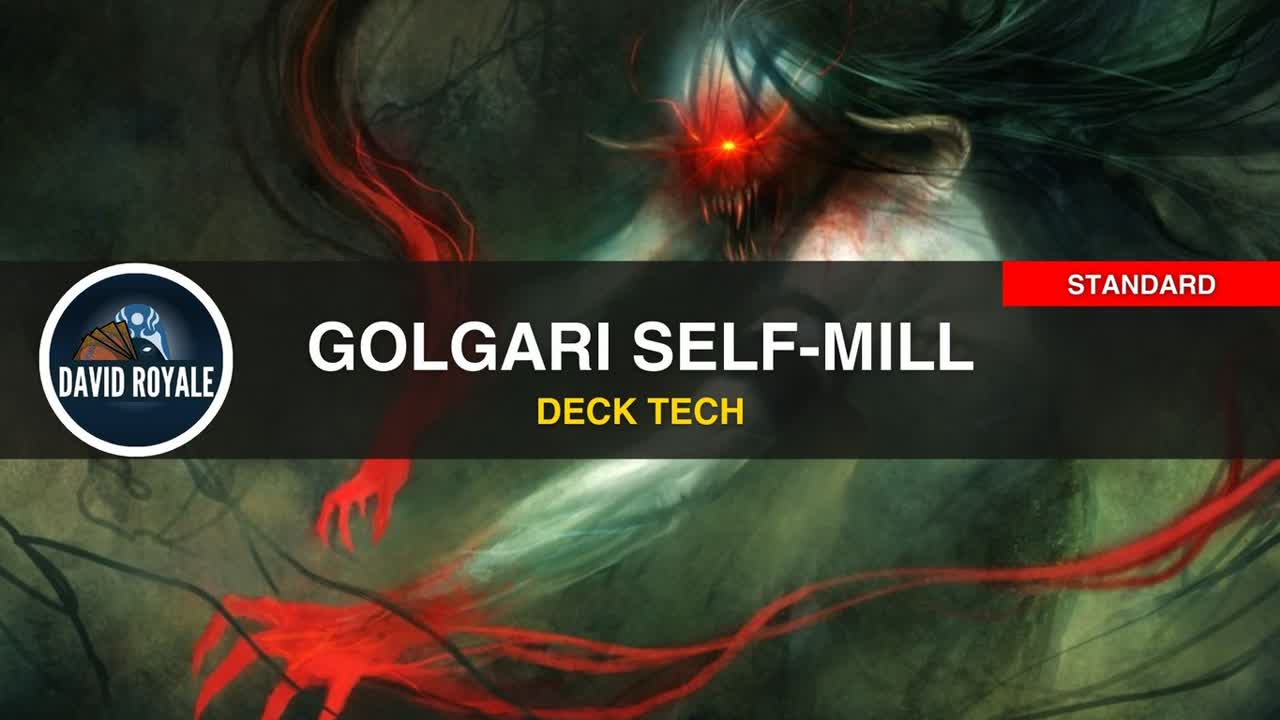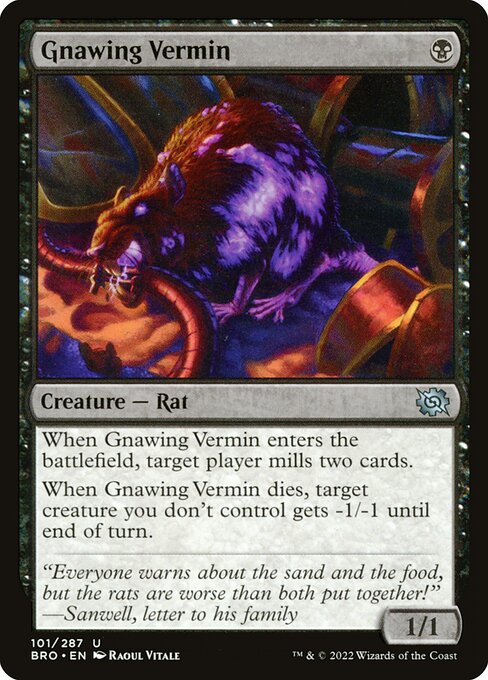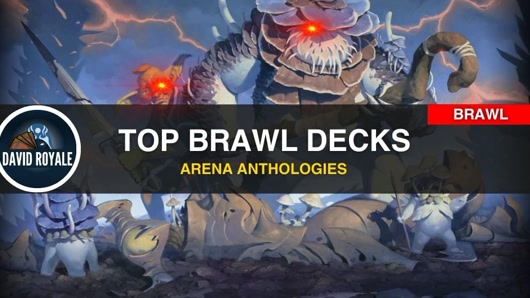Dredge-like strategies have always been some of my favorites to play, and thanks to an old card getting a fresh reprint in Standard, I'm excited to share an updated take on a relatively new deck. I recently saw this Golgari Self-Mill list go 5-0 in an MTGO Standard League, and I couldn't resist diving in. Curious about which card I'm talking about? Let's jump right in!
Golgari Self-Mill Standard Deck Overview
Recently in Standard, Golgari Self-Mill has become a powerful strategy that fuels the graveyard for recursion and value. Cards like Urborg Lhurgoyf and Overlord of the Balemurk thrive when the graveyard is full, while Up the Beanstalk and Hollow, Marauder provide essential card advantages in different ways. This deck balances aggressive threats with resilient mid-game plays, making it a strong contender in the format, and we will now see why by explaining each card in it.
Best Card Choices for Golgari Self-Mill in Standard
The Enablers
Self-mill is the backbone of this deck, and these cards ensure your graveyard fills up efficiently.
- Gnawing Vermin is a solid one-drop that mills on entry and weakens an opponent's creature when it dies, making it a great early play.
- Blanchwood Prowler helps dig for lands while fueling the graveyard, smoothing out mana and setting up bigger plays.
- Overlord of the Balemurk is fantastic for milling your own cards on turn two. Eventually, it becomes a major threat, synergizing extremely well with Up the Beanstalk—but more on that in a bit.
With these enablers in mind, let's move on to the payoffs and, in my opinion, the biggest upgrade Aetherdrift brought to this archetype.
The Payoffs
One of the best cards introduced (or rather, reintroduced) to Standard after a decade is Bloodghast—a two-mana 2/1 Vampire that returns from the graveyard to the battlefield whenever a land enters under your control.
This ability makes Bloodghast a serious threat since you can just play your land and bring it back for free. In the late game, when your opponent's life total is low, it even gains haste, making it a relentless attacker that keeps coming back.
Beyond Bloodghast, once the graveyard is stacked, other creatures become major threats:
- Urborg Lhurgoyf scales based on the number of creatures in all graveyards, quickly growing into a massive beater.
- Hollow Marauder is a one-mana flier that taxes your opponent's hand, reminiscent of Refurbished Familiar.
- Huskburster Swarm is a tough creature with built-in evasion and deathtouch, making it tricky to deal with.
All three of these cards work well with Up the Beanstalk, letting you refill your hand while casting your threats for less mana.
The Removal
Strong removal helps keep the board under control while complementing the self-mill strategy. Overwhelming Remorse takes full advantage of a stocked graveyard, often becoming a one-mana exile spell that can deal with even the biggest threats.
Post-sideboard, Cut Down is an excellent early-game answer against aggressive decks, while Haywire Mite pulls double duty—removing problematic artifacts (including hate cards like Ghost Vacuum) and enchantments, all while gaining life. This versatility makes it a fantastic sideboard inclusion.
Last but not least, Season of Loss can act as a pseudo board wipe and a win condition, as its last ability lets you deal damage based on the number of creatures you have in the graveyard. Ah, it also pairs well with Bloodghast, as you can sacrifice it to draw more cards, and eventually, they will just return as if nothing happened.
The Mana Base
The lands in this deck do more than just produce mana—they actively support your game plan by putting cards into the graveyard. Underground Mortuary and Hidden Grotto are key players in this role.
I left out Wastewood Verge in this version, but you can swap it in for a couple of Llanowar Wastes if you prefer. Lastly, Restless Cottage pulls double duty as both a mana source and an aggressive attacker. It even exiles graveyard cards, disrupting opposing strategies while keeping the pressure on your opponent's life total.
Optimizing Your Golgari Self-Mill Sideboard
I know I've already mentioned a few sideboard cards while discussing other topics—especially removal—but I want to highlight a couple more.
Take Broodspinner, for example. It might seem like an odd inclusion, but it's a crucial tool against early threats like Mockingbird or Spyglass Siren. With Dimir Tempo being one of the best decks in the format right now, having an answer to their early pressure is essential.
To further shore up the matchup, we're running three copies of Cut Down. Against white-based decks, Glistening Deluge is a must-have board wipe, and thanks to Bloodghast, you don't have to worry about losing value when you clear the board.
Lastly, while I've already mentioned it, Haywire Mite is now a sideboard staple. With Vehicles becoming even more popular thanks to the new set's theme, it's a key card—not just for dealing with them, but also for handling common graveyard hate.
Tips and Tricks for Playing Golgari Self-Mill in Standard
Keeping more than three lands in hand is excessive, as you will incidentally grab them with the likes of Blanchwood Prowler, so I encourage you to mulligan aggressively.
There are situations where you have eight cards in hand, especially with Up the Beanstalk and some of the big spells that get a significant reduction in cost based on creatures in the graveyard. To abuse this interaction further, try to keep your Bloodghast in hand to discard it due to hand size, as this way, you can just bring it back whenever you play a land.
Speaking of Up the Beanstalk, there are situations where it's better to play your first creature rather than your second enchantment, but this is relative to how much pressure you are under.
Note that this deck does not have a way to bring back other cards outside of lands and creatures, so when you surveil, keep that in mind as you might need that removal spell you have found on top relatively soon.
Golgari Self-Mill Standard Sideboard Guide: Matchups & Strategies
While the meta is still evolving, some decks are likely to remain strong contenders in Standard. Here's a quick breakdown of how to sideboard against them.
Mono-Red Aggro
In: 3 Cut Down, 2 Haywire Mite
Out: 2 Overwhelming Remorse, 2 Up the Beanstalk, 1 Season of Loss
Post-sideboard, Cut Down helps slow the game down by providing early answers to their aggressive threats. While I wouldn't recommend running a full set of Haywire Mite, bringing in a couple is useful—not just for handling their hate cards but also for gaining some much-needed life.
Dimir Midrange
In: 3 Cut Down, 2 Haywire Mite
Out: 2 Overwhelming Remorse, 2 Urborg Lhurgoyf, 1 Season of Loss
This matchup plays out similarly to Mono-Red Aggro, but Up the Beanstalk becomes crucial in winning the grindy battles against Enduring Curiosity.
In: 3 Glistening Deluge
Out: 3 Huskburster Swarm
This is a tough matchup, as Golgari Midrange has plenty of ways to hate on your graveyard with cards like Tranquil Frillback, Scavenging Ooze, and the ever-present Ghost Vacuum. It's still winnable, but they also have strong answers to Up the Beanstalk, making the matchup an uphill battle.
Simic Terror
In: 3 Ghost Vacuum, 1 Haywire Mite
Out: 4 Overwhelming Remorse
Tolarian Terror haunts me even outside of Pauper, but thankfully, our creatures are just as big. We also run three pseudo-Relic of Progenitus effects in Ghost Vacuum, which can help slow down their game plan. However, expect them to bring in graveyard hate as well, so I highly recommend adding Haywire Mite to deal with it.
Thanks for reading!



















